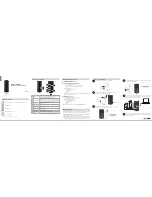
Wi-Fi&BT Module Series
FG50V Hardware Design
FG50V_Hardware_Design 34 / 54
Figure 12: Coplanar Waveguide Design on a 2-layer PCB
Figure 13: Coplanar Waveguide Design on a 4-layer PCB (Layer 3 as Reference Ground)
Figure 14: Coplanar Waveguide Design on a 4-layer PCB (Layer 4 as Reference Ground)
To ensure RF performance and reliability, the following principles should be complied with in RF layout design:
Use an impedance simulation tool to accurately control the characteristic impedance of RF traces to
50 Ω.
The GND pins adjacent to RF pins should not be designed as thermal relief pads, and should be fully
connected to ground.
The distance between the RF pins and the RF connector should be as short as possible, and all the
right-angle traces should be changed to curved ones. The recommended trace angle is 135°.
There should be clearance under the signal pin of the antenna connector or solder joint.
The reference ground of RF traces should be complete. Meanwhile, adding some ground vias around
RF traces and the reference ground could help to improve RF performance. The distance between
















































